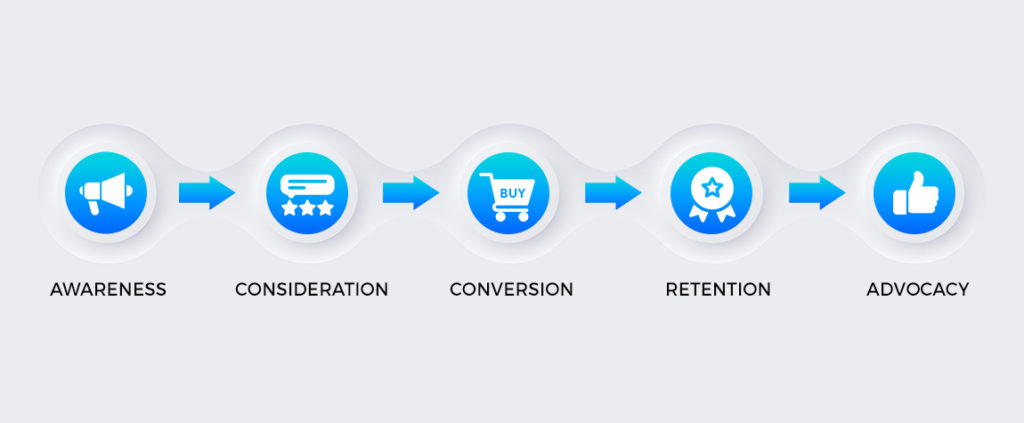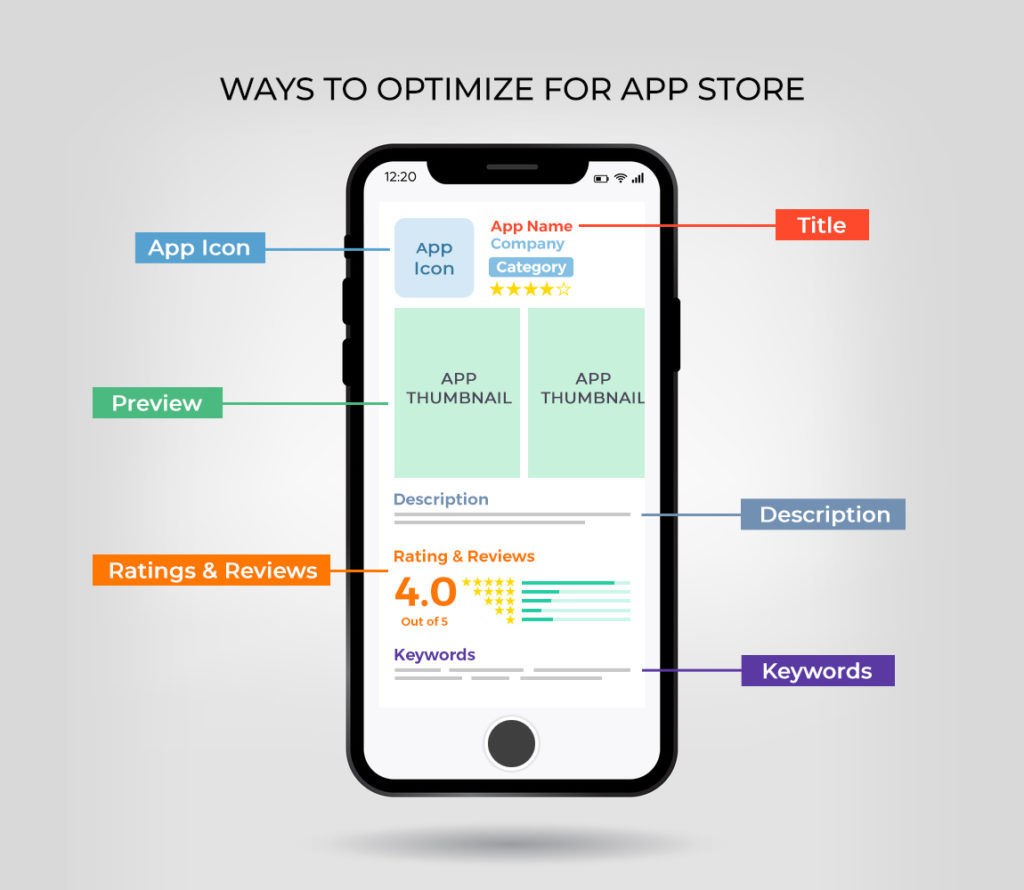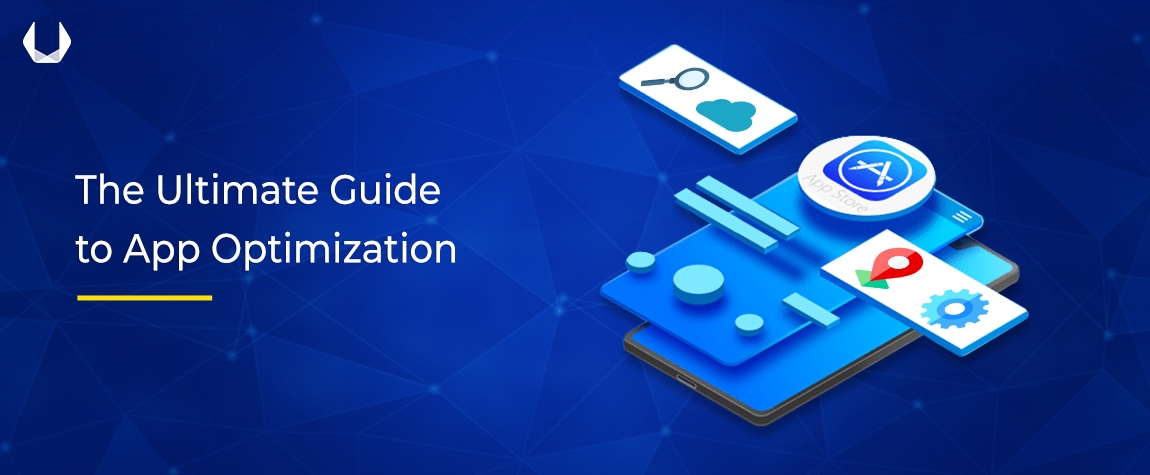In 2023, mobile apps are expected to generate more than $935 billion globally via paid downloads and in-app advertising. Mobile app optimization has become vital for online brand expansion. It drives business demands and customers’ loyalty. Great apps require attention, innovation and a new breed of analytics to harvest factors impacting app usage. Observing users’ behavior drives an understanding of their experiences. It also helps in enhancing the mobile apps in different release rollouts. Hence, developing a customer-centric mobile app optimization strategy is the need of the hour.
Why do Apps Need to be Optimized?
Users spent, on average, 85% of their time on smartphones in apps. Hence, building a useful responsive mobile app is an effective strategy to engage and earn a long term loyalty of the mobile users. The surprising factor is that, though users spent 80% of their time on the app, only a few countable apps are popularly used. (An average of 5 apps per user observed is heavily used). People do not download or use several other apps of the same niche. Hence, app optimization is an important factor in enhancing the overall utilization and productivity of an App.
Optimizing Mobile Apps also becomes imperative when we observe that an average of 60k new apps to iTunes and 50k to Google Play are uploaded every month. At the end of the day, there’s a lot of competition out there. To make your brand’s app stand out from the competition, the developers need to understand that mobile apps play a valuable role in delivering the mobile experience and business. Application designed should be device ready irrespective of the size or type of device used. Optimized App needs to rise above the competition.
1. Ensure a Smooth Onboarding of Users
Let’s take a common anecdote to understand this better. Your app user is similar to a person visiting a mall. A mall visitor judges his experience based on several touch points, such as: how well the merchandise is displayed, how easily the shelves can be navigated and how efficient the customer service is, to name a few. The cumulative responses of all these factors make them decide to stay, shop, or leave. Similarly, the initial few minutes that a user spends on your mobile app determine whether he will remain using or abandon it.
80% of users abandon the App within the 3 days of installing it. The onboarding issue of an App can be enhanced by following the best practices. A few important ones are listed below:
- As per the qualitative analysis, users avoid sign-up screens, so avoid signing up features in the App until it is extremely essential. Prefer an app design without signing up.
- Keep things clean, sorted, and short. Imbibe highly organized navigation designs, making things easy to read, fitting them to the screen of the device, maintaining the fast speed and displaying the progress status.
- If the user is unclear about the expectation from the App, then grab the opportunity to wow them with your potential feature and instant help before they leave the App.
Qualitative app analytics ensures an excellent onboarding experience. It fetches the quantitative data catching every gesture with user session recordings and aggregating the touch heatmaps that users tap and swipe on the screen the most.
2. Empower Users’ Search Journey
The App should deliver great search UX, retaining efficiency and accuracy.
- Ensure smart navigation rendering easy & fast search experience.
- Incorporate intuitively intelligent functions to identify what users’ are looking for.
- Interpret the users’ behavior and learn from their interactions.
- Deploy those potential updates in future app rollouts.
- Imbibe detail-rich features like auto-fill suggestions from search history and apply the principle of “least effort on UXâ€.
It’s also a good idea to monitor and optimise the search function in your app. Make sure to record every user session and minutely study how users are experiencing and using the search functionality of your app. Make observations on the user journey before and after they perform a search. Next, see how searches lead to desired events or conversions. Learn the users’ expectations from your App. This will help you better understand and further optimize App experience of your App.
3. Enable the Purchase Funnel
Paying up, subscribing & in-App purchases and the most important stage in the app user’s journey. So, it’s important that apps encourage users’ to complete the purchase funnel. Any glitch in the payment screens can frustrate users resulting in quitting the purchase session and potentially deleting the App. However, building trust, empathy, and monitoring for bugs can help in creating a trustworthy payment process. Though mobile apps are mushrooming for eCommerce in the digital landscape, however, its conversion rate is lower than desktop.
As per the stats on mobile marketing from Smartinsights, conversion rates on mobile phones are 2.03%, in comparison to 4.68% on desktop. Here are a few reasons that make users reluctant to complete the transaction
- slow-loading screen
- sudden pop-up notification
- suspecting virus/bugs/theft, and
- less-than-obvious buttons/icons
So, building trustworthy and safe apps that render streamlined experience is the key. By keeping an eye on the app payment screen through crash analytics, bug analytics, conversion funnel analytics, etc., you can get insights on performance insights and alerts that need to be chased down and squashed. Set the alert and track the issues, and ensure to rectify before the user experiences it. Further, determine the stages of users drop out, keep up with impacting KPIs, consult session recordings to inspect breakdowns, and find the usability issues. Subsequently take the measures & rectify them during app updates.
The application must display the accurate results between desktops, laptops, mobiles (androids, blackberry, iPhone), and tablets (Kindle, iPad, Galaxy, etc.). Therefore, app optimization has to be device friendly as well.
4. Optimise Mobile User Journey
Your Mobile Apps’ user journey needs your attention. The consistent learning curves should keep striving to bridge customers’ online and offline experiences with the right interfaces and communication to keep up the users’ expectations. Get multichannel with a single view. Be omnipresent. Thinking automation is a smart strategy to render consistent content across channels. Wherein, the content can be simultaneously accessed from a different location, time, and device.
- Stay ahead of the customers’ journey.
- Deliver exemplary user’ experience
- Let user derive value for your brand
- Adapt to change, along with technology, data, tools, etc.
- Frequently enhance valuable mobile interactions.
- Understand what users wish to achieve with your brand.
- Keep updating changes
- Scale your engagement to the global level
Keep offering a responsive value-added mobile content and interactions. App optimization encompasses responsive devices for friendly designs.
The optimization of your App comprises the App name, icon, title, screenshots, videos, rating, review, engagement metric, retention KPIs and a lot more. Optimization is performed to expand the visibility of the App as it is directly proportional to the number of downloads. It potentially enhances the visibility, downloads, and retention of the Mobile Apps.
Summary of App Optimisation
To Sum things up, your ideal app optimisation Process must include the following:
- Create a useful purpose-specific app.
- The App should solve users’ problems.
- Apply an innovative concept/deal.
- Experiment to bring advantage to the app.
- Practice a responsive and ergonomic design.
- Adhering to trends & reviews conduct regular updates
- Enhance App performance with every update.
- Enrich User Experience (UX) designs.
- Optimize app speed.
- Imbibe stable, reliable, & bugs free functionalities.
- Resonate your brand
What is the App Store? How is the App Related to it?
App stores in the form of an online store, orchestrate Apps, allow users to browse through these app categories, information (e.g., reviews, ratings) and acquire the App (including free and paid Apps).Â
The App submission to App Store goes through an approval process, inspected for compliance based on certain guidelines (e.g., quality control and censorship), inclusive of commission to be collected on the respective sale of a paid app. To understand your users better, you have to understand their journey map to user’s App (Illustration #1). The user’s journey begins with the inquiry/search of an App, evaluating its usage, considering it to download, experiencing its features, then deciding on whether to retain its installation or quit, and at last advocating accordingly. Throughout the journey the mobile responsive design played a vital role.

It is not just about the app design or any offer that matters; rather, it is about the users’ experience with the App. It is more about how consistently the App gets evolved with the changing users’ choice. Work closely with the users’. Analyze the entire user journey. Deploy improvements and updates in the App, enhancing users’ experience. Now, you can expect conversions.
Why do App Stores Need to be Optimized?
It is a process of enhancing App visibility in the App stores, increasing the App conversion rates. App Store Optimization is a holistic discipline that encompasses entire aspects of the app store presence—taking care of keywords, visual creative, rating/reviews, features, app weight, ranking, store ads, branding, etc. ASO mainly focuses ranking high in the App Store search results and click-through rate (CTR). The intent behind this is to convince the consumer to click into your App store listing once they find it.
The main objective of App Store Optimization is to maximize the number of downloads and loyal users. Also, make App discoverable by the qualified users.
How Does App Store Optimization (ASO) Work?
Finding the “downloader intent†is crucial. ASO too follows the basic principles of natural optimization. However, it is comparatively less complicated. Let’s explore the mechanics of ASO.
The ranking criterion of the mobile apps keeps changing for the different marketplace. It sets a fundamental approach to rank through ASO. So, the App has to keep evolving to address the dynamics of the market. The Apple App Store and Google Play are the main two competitors in the market today.
Google algorithms are precisely more mature in comparison to the Apple Store. And that makes the difference. Hence, App Store Optimization has to work through two criteria:
Criteria 1: Formal Optimization Technique
This criterion optimization matrix includes those factors that are dependent on the publisher of the application. It is very similar to the tradition SEO approach, like:
Keyword optimization involves identifying qualified audiences and the right set of keywords. Accordingly, declaring and defining Title, Tags, and Description and other essential fields adhering to algorithmic requirements.

Consistently, keep updating the App and the App Store Optimization requirements. Why? Because the chances of app ranking narrow down with its age until it maintains regular updates and applies ASO best practices. i.e., older the App, lesser the possibility it holds to rank high in the app store.
Criteria 2: Interaction Based Technique
It fundamentally senses the interactive relationship between the users and application, which enables the App Store Algorithms to introspect the app quality. Accordingly, it is recommended and listed in the search result. The matrix of the gauging factors that measure the interactive behavior between user and app are of different categories. Few important ones are as follows:
1. The App Rating Â
- If score= 4 stars imply users highly appreciates the App,
- If score = 3 stars, users are highly satisfied,
- If score =2 stars, average performance, and
- If score = 1 star, the performance is dissatisfying.
2. Total Download Volume of an App
The total number of app downloads shows the buzz and demand of an app, and also depicts the user value attached with it. The higher the number of downloads, the higher the ranking your app is likely to achieve in the organic rankings.
3. The Total & Difference Between App Installs and Uninstalls
The retention rate is even more important than the installation numbers. An app with high uninstalls will not be able to make it to the top 5 or 10 apps in its category which will ultimately pull down its organic ranking in the app store.
4. Stats Matrix of App UsersÂ
For example, total users, no. of active users, session time, average time spent on the app, etc. The success of mobile apps in the marketplace depends on the amalgamation of the above two criteria in terms of “Control “and “Chance”. “Control” in terms of choosing relevant keywords and their appropriate use. And “Chance” in terms of answering “will the app run?”, ‘will it be installed to catch the ranking?”, etc. ASO encourages downloads, increases visibility, and retention rate. It is an effective way to meet the positioning criteria of Google and Apple stores.
Key Points to Check during App Store Optimization
ASO, when done correctly, enables your App a higher natural/organic rank in the Google Play and Apple App stores with better overall discoverability for new and existing App users. The process of ASO is two fold. We have dealt with each aspect in a separate article on ASO, where we have created a 10-Point checklist for the same. Broadly speaking, ASO can be classified into two categories.
1. On-Metadata FactorsÂ
On-metadata factors are used to improve app store keywords rankings. They are the elements of the product page/listing and can be modified in App Store Connect or Google Play Console. Improved keyword ranking increases not only the visibility but also the conversion rate to download. On-metadata optimization helps rank higher in searches.
The list of these elements includes URL/ Package, App name/ Title, Description, Subtitle, Short Description, Promo Text, Developer name (only in Google Play), keyword fields (only Apple), icon, category, screenshots, video, what’s New app updated, review replies, etc..
2. Off-Metadata Factors
Off-metadata factors are those impacting elements that are beyond the control of the developer. It requires consistent monitoring. Like the volume of installations, speed of installs, reviews, replying to positive and negative reviews & rating, session time, analysing users feedback, adopting enhancements (removing bugs) in app updates, and other user-engagement KPIs.
Conclusion
The omnipresence and convenience of mobile have brought a paradigm shift in users’ behavior. Mobile usage has gradually become the center of our online lives today. The expansion of mobile consumption is an opportunity for the business to tap the power of larger audiences online. Optimizing mobile apps takes you to those goals. Delve deeper into what benefits the App? It is all about bringing purpose in it for the user. Race ahead, understand what your users want— even before the users themselves realize it.

